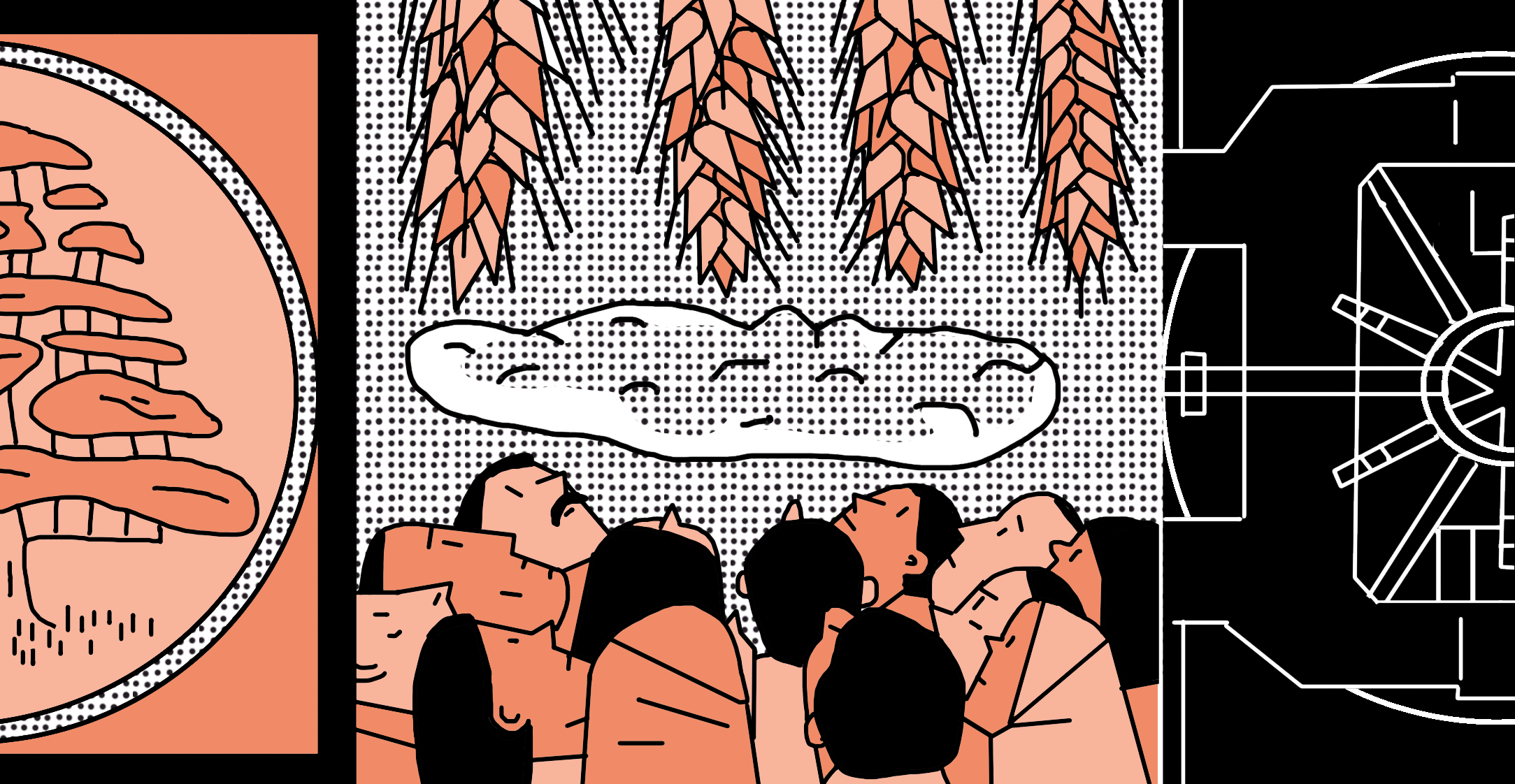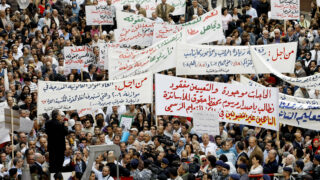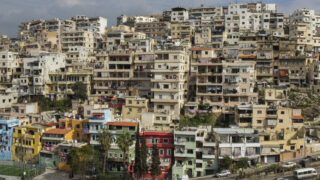This publication file is in the framework of the activities of the network of independant media on the Arab world. The regional cooperation is made by Al-Jumhuriya, Assafir Al Arabi, Mada Masr, Maghreb Emergent, Mashallah News, Nawaat, 7iber and Orient XXI.
In recent months, Lebanon has been alive with rumours about a forthcoming devaluation. In mid-September, the governor of the Central Bank, Riadh Salameh was obliged to officially deny that he was ill and had to resign and Michel Aoun, the President of the Republic, also had to declare that the Lebanese pound was in good health and that the country was not on the road to bankruptcy. For every Lebanese these factors are indeed closely related since all know that the country is deep in debt.
The Lebanese debt was eighty billion dollars in 2017, which amounts to 150% of the GDP (estimated at 51.85 billion dollars). This is the third highest ratio worldwide, just after Japan and Greece. If no effort is made in the years to come, economists foresee a rate of 160% or more by 2020. “Everyone knows that a national debt need not be repaid,” said Sibylle Rizk in an interview. She is in charge of public policy studies at Kulluna Irada, a centre for research and analysis created by the so-called civil society.
Why this risk?
The service of the debt, in other words, the interest paid by the Lebanese government is nearly five million dollars, which already represents 25% of the annual budget, estimated at 19.1 billion dollars in 2018 (Lebanon has not published the official figure). IMF economists believe this service could amount to 60% of the State budget by 2021, which would be obviously untenable.
In order to repay the debt and finance its expenditures at the same time, the government needs to collect more money. Today the incoming cash-flow is less than the expenditures. In 2018, taxes (income and corporate taxes,VAT, customs duties . . .) plus the revenues of the various administrations and government properties (the State Casino, the diaspora’s Telecom transfers) will bring in 13 billion dollars. Consequently, the budget deficit will amount to some 7 billion dollars, which means that 37% of the budget expenditures will again increase the burden of the debt this year (source: Chistian Abou Tayeh, investment banker at Merill Lynch). In other words, the Lebanese government issues more debt each year to finance itself. 70% of the debt is denominated in Lebanese pounds and 30% in dollars and is remunerated at the relatively high rate of 9% for the pound and 7% for the dollar. Which makes it quite attractive for investors. The largest share of the debt is subscribed by Lebanese banks and the Central Bank of Lebanon which at present holds over 85%.
The reason why Lebanese banks are in a position to buy so much of the debt is that they hold sizeable deposits, amounting to 200 billion dollars all told, i.e. nearly four times the volume of the country’s economy in 2017. Nearly 40% of these deposits comes from the Lebanese diaspora, precisely because of the advantageous interest rates offered by Lebanon as opposed to other countries. And over 80% of these deposits are denominated in dollars. Thus far, all is well.
“This inflow of deposits is essential to finance the debt and the balance of payments (11.6 billion dollars in 2018) denominated in foreign currency,” Rosalie Berthier, an analyst with the research centre Synaps, explained in an interview. Indeed, the country imports 90% of its consumer goods and pays for them in hard currency (mostly euros and dollars). And there’s the rub.
The IMF considers that in order to finance its trade deficit and the ever-increasing interests on its sovereign debt, the country needs to increase its dollar deposits by 6 to 7%, i.e. between 6 and 7.2 billion dollars more per year.
Now, over the past few years, deposits have grown more slowly than in the past for various reasons: there is less money about, interest rates have risen, especially in the USA, and country risk is relatively high. . . “In short, Lebanon has a highly dollarised economy which spends many dollars and no longer is able to attract them,” said Rosalie Berthier. Whence the risk of having to devalue its own currency.
The exchange rate between the dollar and the Lebanese pound has been fixed since 1997 at 1 USD=1507.5 LP. It is known as the “peg.” It is so deeply embedded in people’s ordinary lives that the Lebanese economy functions with both currencies. In nearly any shop in the country you can pay in either dollars or pounds with the guarantee that the two are interchangeable. And yet this parity depends on the Central Bank’s capacity to underwrite it, which is why it always makes sure it has enough dollar reserves to buy pounds and vice versa.
Today, no one knows exactly the amount of the CBL’s foreign currency reserves, for the detailed figures are not made public. What is certain, however, is that the slower increase in dollar deposits has endangered these reserves and consequently the BDL’s capacity to support the pound.
The challenge: making the debt sustainable
Unfortunately, the country does not create enough wealth to generate savings and fill the coffers of the State. Economic growth is very slow (less than 2% forecast for this year); inflation is at a record high (6.3% during the first eight months of 2018); infrastructures (highways, telecom, water supply, waste management) are in urgent need of repair and modernisation, a need accentuated by the influx of more than a million and a half refugees since 2011; and above all, productive investments represent less than 1% of the GDP (the world average is 8.2%).
“The problem today is that the whole edifice is out of unsound,” Sibylle Rizk explained, “all the pillars of the economy are frail, anything at all might jeopardise the Lebanese economy.” Thus, at the Cedar Conference in April this year, Lebanon was promised loans for a total of eleven billion dollars at relatively favourable rates of interest. The idea was precisely to raise funds to finance infrastructure development and stimulate the economy. “But that’s just more debt,” Rizk observed.
Today the main issue is to make the debt more sustainable and hence to reduce the debt to GDP ratio. The objective of those Cedar Conferences is to increase the GDP but an alternative path would be to shrink the debt. To do so, the government has a choice: new taxes (such as the widely criticised VAT increase from 10 to 11% in 2017) or budget restrictions (in particular by wage cuts for civil servants).
But aside from the fact that five months after the last election, a new government has not been formed, the country is up against an endemic system of corruption and clientelism which makes any reform very complicated. For example, in some regions less than 65% of electricity bills are actually paid and the Government must make up the difference to the public company, Electricité du Liban. In 2018, this will amount to 7% of the national budget. Another example: the collection of VAT depends on the share of transactions actually declared. But most Lebanese companies keep two account books, one “white” and one “black,” in order to pay as little VAT as possible to a state which is quite rightly deemed corrupt (Lebanon is 136th on the list of the world’s most corrupt countries).
And far from placing restrictions on the aggregate civil service payroll, which represents 35% of the national budget, the salary scale was actually raised last year and new jobs were created. “Despite the incompetence and clientelism, civil service jobs represent, like it or not, a safety net which a country at the end of its rope cannot do without.” Such is Sybille Rizk’s analysis.
Then what is to be done?
There would be a way of easing the burden of the debt which no one dares mention yet: restructuring the debt by mutual agreement with the country’s creditors. This could consist of rescheduling payments, reducing interests or even reducing the total amount due.
Most of the Lebanese debt (85%) is in the hands of Lebanese banks and the BOL. Which means that over 60% of the Lebanese merchant banks’ assets are profitable only because of the debt.
Thus the relationship between Lebanese banks and the government is very close, both of them profit by a system which neither wishes to see collapse. “Which is why a Greek or a Turkish scenario, where international creditors pressured a bankrupt country into making drastic reforms that bled the population white and where the national currency was quickly devalued, would make no sense,” Nassib Ghobril, head of the research analysis department of the Byblos Bank, told us in an interview. “Our debt is a family affair.” Thus the government has the option of borrowing from local banks the better to repay them generously, as it has been doing for decades.
A government restructures its debt when it is near breaking point, when it can no longer fulfil its obligations,” Sibylle Rizk explained. “Now, for the moment, the Lebanese government has made no such request to the banks.” But how long can this system last before devaluing becomes inevitable?
“It’s a question of confidence,” Rosalie Berthier explained. “Today maintaining the peg sends a message of stability. So long as the Governor of the Central Bank, Riad Salameh, keeps the job he has held for 25 years and continues to inspire confidence, things will be all right. The day that confidence fails, the day the pound fails to hold its own, anything may happen: if the banks refuse to make loans to each other, there will be a cash-flow issue, we’ll have a Lehman Brothers type scenario where the whole system will seize up.”
“The pound-dollar parity has survived four big shocks in the past.” Nassib Ghobril tried to see the situation in relative terms. “Rafic Hariri’s assassination in 2005, the war with Israel in 2006, the fall of Saad Hariri’s cabinet in January 2011 and his ‘resignation/kidnapping’ in November of the same year. Only the first two actually put pressure on the Lebanese pound. And each time, the peg held, despite episodes of capital flight which were always quickly squelched. So it would take a shock more severe than the assassination of the Prime Minister or a war to put the pound at risk.”
The cost to the economy
What many Lebanese do not realise is that everyone benefits in one way or another from the peg. “The Lebanese pound is overvalued. If the pound were left to float, the man’ousheh, the flatbread which is our staple food and which costs 1,000 pounds today, would cost much more,” as Rosalie Berthier explained,” if only because the wheat to make it is imported. That would be a catastrophe for the lower middle class and the poor.”
To make things worse, the banks are reluctant to finance productive investments, although the economy needs them, because the government’s debt brings in such a comfortable income. Indeed, the rate of interest on loans to SMEs are high enough to discourage most entrepreneurs. In one of the biggest Lebanese banks, you have to expect an interest rate of at least 12% on a loan in dollars and 14% on a loan in pounds.
The problem is that political inertia, on the one hand, and the steps taken by the BOL to avoid crises on the other, only kick the can down the road, leaving future generations to worry about the debt. “Since the end of the civil war, successive governments have been on a spending spree, with no thought for fiscal discipline,” Sami Makdessi, an economist at the American University in Beirut, explained in an interview.
“Lebanon has a great many experts capable of coming up with solutions,” he added. Unfortunately, what it lacks is proper governance to put them into practice.” Lebanon ranks 140th in terms of governance according to the World Bank’s classification. And without governance, even if solutions exist, hard as they are to apply, no reforms or improvements are conceivable.
Today the country appears paralysed by its crisis, by corruption and waste, with few solutions in view. For the moment, the financial system is holding its own, backed by the confidence, which has already survived many shocks. But this situation is not sustainable and none can say when that confidence will be shaken and when the system will collapse.
____________________
Marie-José Daoud
Journalist based in Beirut and co-funder of Labneh&Facts. She started in marketing and converted into journalism in 2009. She works on economical and social issues.





